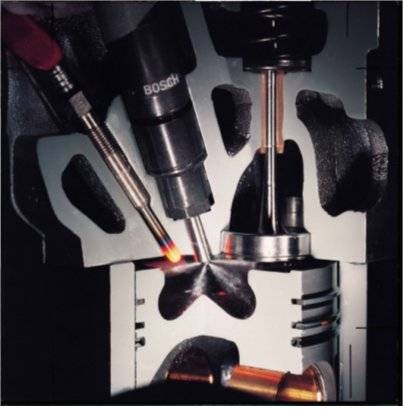
Basic diesel fuel injectors contain a fuel supply line, an intake valve, an exhaust valve and the fuel injection apparatus. Each cylinder is attached to its own fuel supply line, all of which run from the fuel tank to the engine. Fuel is transferred through these fuel supply lines to the fuel injector device attached to each cylinder. Along the way, the fuel passes through a filter that removes residue and impurities. When the diesel fuel reaches the injector device, it becomes highly pressurized. The fuel injector is attached to a small pump, which forces air into the injector and pressurizes the diesel fuel. The injector then sprays the diesel fuel through a small nozzle into the cylinder's combustion chamber. The nozzle contains a series of small holes, which ensure even distribution of the diesel fuel into the cylinder's combustion chamber. An air intake valve sucks air into the chamber, which mixes with the vaporized diesel fuel and intensifies the combustion. An exhaust valve removes the resulting emissions from the combustion chamber, and a return fuel line removes any excess fuel from the combustion chamber and returns it to the fuel tank.

Diesel fuel injectors have become increasingly sophisticated and efficient in recent years. Modern diesel fuel injectors are regulated by computers, which monitor the amount of air entering the engine and regulate the amount of diesel fuel that is sprayed into the combustion chamber. Fuel injectors have also been modified slightly to accommodate the use of biodiesel fuel, which is diesel fuel made from plant and animal oils rather than from petroleum. Biodiesels are not as powerful as petroleum-based diesel fuel, so more biodiesel fuel is required to run an engine. Hence, diesel fuel injector pumps have become more powerful and more closely integrated with the system's computer in order to ensure that the appropriate amount of fuel is delivered to the combustion cylinder.